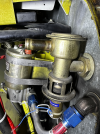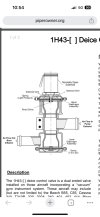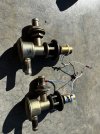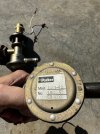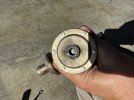Tokirbymd
Pre-takeoff checklist
- Joined
- Oct 17, 2019
- Messages
- 286
- Display Name
Display name:
Tokirbymd
Have a problem with my deice boots (1994 Seneca IV). I think the deice valve on both sides isn't working and need help troubleshooting. I've pressurized the intake on the valve and actuated the solenoid (which "clunks" into position fine and shakes appropriately when shaken). But am still feeling a lot of air leaking I think past the diaphragm (inside the "cage" pictured below) and very little to no air from the outlet port. Is there a decent way to test this before I go spending $3k each for OH units (if they can even be found).